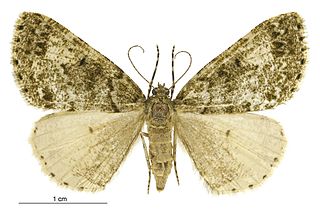
Pseudocoremia indistincta is a species of moth in the family Geometridae. It is endemic to New Zealand.
Scoparia parca is a species of moth in the family Crambidae. It is endemic to New Zealand.

Gymnobathra bryaula is a moth of the family Oecophoridae. It was described by Edward Meyrick in 1905. It is endemic to New Zealand.

Gelophaula aenea is a species of moth of the family Tortricidae. It is endemic to New Zealand.

Gymnobathra callixyla is a moth in the family Oecophoridae first described by Edward Meyrick in 1888. It is endemic to New Zealand.
Gymnobathra rufopunctella is a species of moth in the family Oecophoridae. This species is in need of taxonomic revision and probably belongs to a separate genus. It is endemic to New Zealand. It has been classified as Data Deficient by the Department of Conservation.

Gymnobathra is a genus of moths in the family Oecophoridae. It was first described by Edward Meyrick in 1883. All species are found in New Zealand.
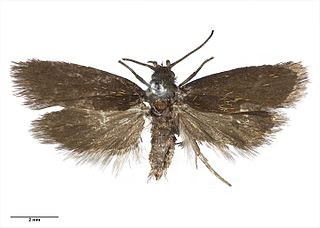
Hierodoris squamea is a moth of the family Oecophoridae. It is endemic to New Zealand and is found in the mountains of Fiordland as well as the Olivine Range in south Westland. This species has a wingspan of between 12 and 13 mm and can be distinguished from similar species as it is very small in size, has a reduced eyespot on its forewings, clearly visible through Scanning Electron Microscope preparations, and has orange-yellow scales overlaying its dark forewing. It prefers open country of tussock grasslands and herbfields at high altitudes. As at 2005 the larvae is unknown. Adults are on the wing in January.

Tingena aurata is a species of moth in the family Oecophoridae. It is endemic to New Zealand. The adults of the species are on the wing in November and December.
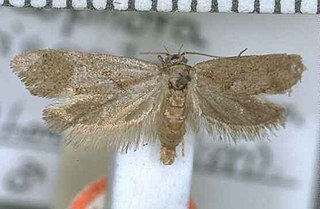
Tingena griseata is a species of moth in the family Oecophoridae. It is endemic to New Zealand and has been observed in North Canterbury. The larvae of this species are leaf litter feeders.

Dasyuris anceps is a species of moth in the family Geometridae. It is endemic to New Zealand.

Dasyuris hectori is a species of moth in the family Geometridae. It is endemic to New Zealand.
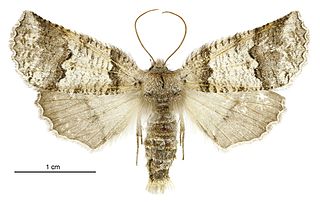
Declana feredayi is a species of moth in the family Geometridae. It is endemic to New Zealand. Adults of this species pollinate Hoheria Iyallii.
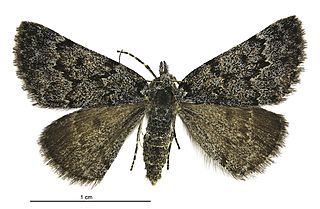
Dichromodes niger is a moth of the family Geometridae. It is endemic to New Zealand.

Paranotoreas ferox is a species of moth in the family Geometridae. This species is endemic to New Zealand. This species was first described by Arthur Gardiner Butler in 1877 and named Fidonia ferox. In 1986 Robin C. Craw placed this species within the genus Paranotoreas.

Atomotricha sordida is a moth in the family Oecophoridae first described by Arthur Gardiner Butler in 1877. It is endemic to New Zealand.

Gymnobathra philadelpha is a moth in the family Oecophoridae first described by Edward Meyrick in 1883. It is endemic to New Zealand.
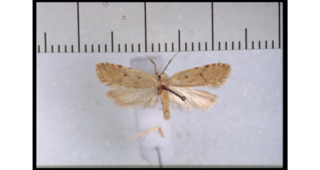
Gymnobathra primaria is a moth in the family Oecophoridae first described by Alfred Philpott in 1928. It is endemic to New Zealand. It has been hypothesised that this species likely belongs to another genus.
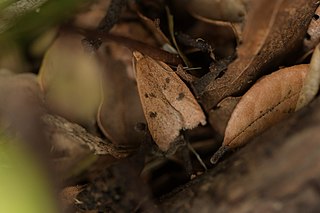
Gymnobathra sarcoxantha is a moth in the family Oecophoridae first described by Edward Meyrick in 1883. It is endemic to New Zealand. It has been hypothesised that this species likely belongs to another genus.

Gymnobathra tholodella is a moth in the family Oecophoridae first described by Edward Meyrick in 1883. It is endemic to New Zealand. It has been hypothesised that this species likely belongs to another genus.


















